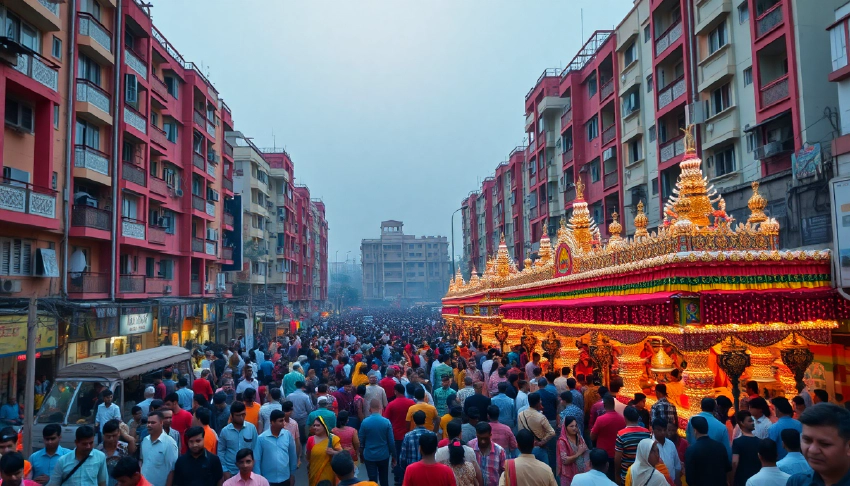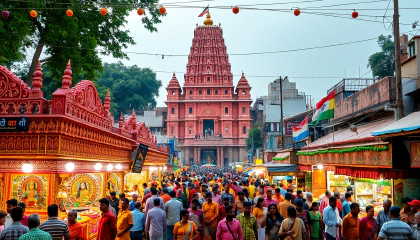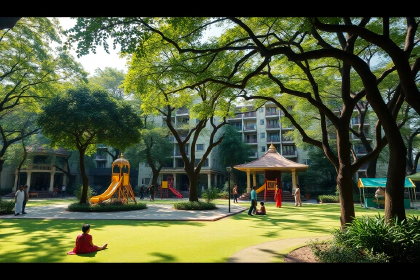
Chittaranjan Park: Delhi's Vibrant Bengali Enclave
The Evolution of Chittaranjan Park: A Bengali Enclave in Delhi
Introduction
Nestled in the heart of South Delhi, Chittaranjan Park stands as a vibrant testament to the resilience and cultural richness of the Bengali community in India’s capital. Born from the ashes of partition and nurtured by the spirit of its inhabitants, this unique neighborhood has blossomed into a thriving cultural hub that seamlessly blends tradition with modernity. This article delves into the fascinating journey of Chittaranjan Park, exploring its historical roots, cultural significance, and the ways in which it has transformed over the decades to become a cherished part of Delhi’s diverse tapestry.
Historical Foundations: From Refugees to Residents
The Birth of EPDP Colony
In the aftermath of India’s partition in 1947, a wave of displaced persons from East Bengal (now Bangladesh) sought refuge in Delhi. Recognizing the need for a dedicated settlement, the East Pakistan Displaced Persons Association was formed in 1954, advocating for a permanent solution to house these refugees.
From Barren Land to Bustling Community
The Indian government allocated land in what was then a rocky, barren area in southern Delhi. Initially known as the East Pakistan Displaced Persons (EPDP) Colony, the settlement began to take shape in the 1960s. The original master plan included approximately 2,000 plots divided into eleven blocks (A-K), along with markets and cultural spaces.
A Name Change and Growing Identity
As the community grew and established itself, the colony underwent a series of name changes. From EPDP Colony, it became Purbachal, and finally, in the 1980s, it was christened Chittaranjan Park in honor of the renowned Bengali freedom fighter Chittaranjan Das. This name change symbolized the community’s deep connection to its Bengali roots while embracing its new Delhi identity.
Cultural Tapestry: Preserving Bengali Heritage in the Capital
Festivals and Traditions
Chittaranjan Park has become synonymous with vibrant Bengali cultural celebrations, most notably the Durga Puja festival. The neighborhood comes alive during this time, with magnificent pandals (temporary structures) housing elaborate idols, cultural performances, and a festive atmosphere that attracts visitors from across Delhi.
Culinary Delights
The area is renowned for its authentic Bengali cuisine, with numerous eateries and street food stalls offering delicacies like fish fry, kathi rolls, and mishti doi. The fish markets of CR Park are particularly famous, drawing food enthusiasts from all over the city.
Cultural Institutions
Organizations like the Chittaranjan Park Bangiya Samaj and the Deshbandhu Chittaranjan Memorial Society play crucial roles in preserving and promoting Bengali culture. These institutions organize various events, language classes, and cultural programs throughout the year, ensuring that the community’s heritage remains vibrant and accessible to younger generations.
Urban Evolution: Adapting to Change
Architectural Transformation
Over the decades, Chittaranjan Park has witnessed significant architectural changes. Many original single-story houses have been replaced or expanded into multi-story apartments, reflecting the area’s increasing property values and changing family structures.
Demographic Shifts
While initially conceived as an exclusively Bengali enclave, CR Park has gradually become more diverse. The neighborhood now welcomes residents from various backgrounds, creating a unique blend of cultures while still maintaining its distinctly Bengali character.
Infrastructure and Amenities
The development of CR Park has been accompanied by improvements in infrastructure and amenities. The area now boasts excellent connectivity, with nearby metro stations, schools, markets, and healthcare facilities, making it a highly sought-after residential locality in South Delhi.
Conclusion
Chittaranjan Park’s journey from a refugee settlement to a thriving cultural hub is a remarkable story of community resilience, cultural preservation, and urban adaptation. As it continues to evolve, CR Park remains a vibrant testament to the power of cultural identity in shaping urban spaces. This Bengali enclave in the heart of Delhi not only provides a home for its residents but also serves as a cultural bridge, inviting all of Delhi to experience the rich tapestry of Bengali heritage. As the neighborhood looks to the future, it stands as a shining example of how communities can preserve their unique identities while embracing the diversity and dynamism of a modern metropolis.





